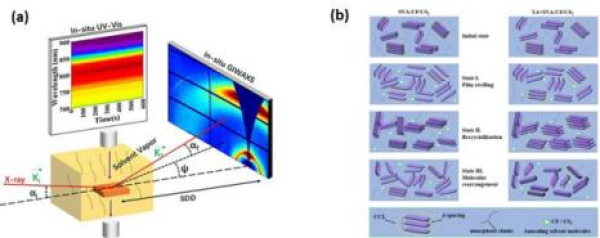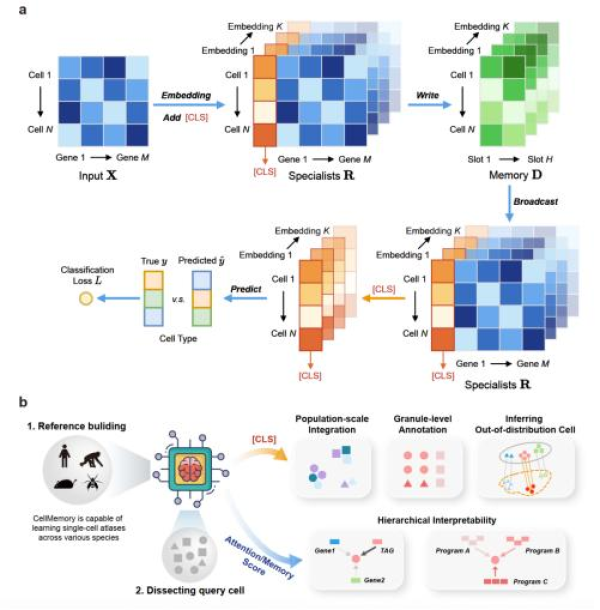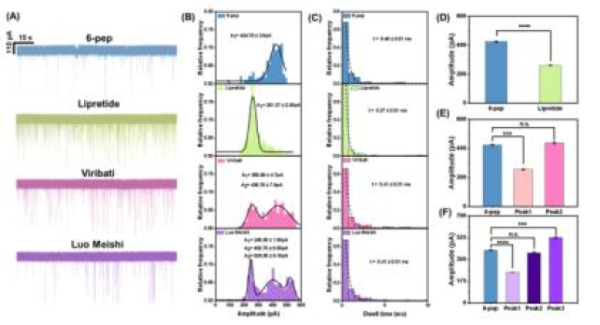Weekly Advanced Technologies〔81〕

Weekly Advanced Technologies〔81〕丨How Solvent Vapors Reshape Solar Films: Captured in Real Time; AI-Powered Cellular Biographies: Profiling States and Transitions in 15M+ Cells
How to improve flexible solar cell efficiency? New research unveils—in real time—how thin films transform in solvent vapors, offering promise for future lightweight, wearable devices.
As single-cell data grows exponentially, how can we rapidly and accurately identify cell identity? A novel model named CellMemory has emerged, providing a cross-platform, cross-species solution for cell analysis.
Based on the weekly diary of technology provided by the daily list of the NCSTI online service platform, we launch the column "Weekly Advanced Technologies" at the hotlist of sci-tech innovation. Today, let's check out No.81.
1. Advanced Science丨How Solvent Vapors Reshape Solar Films: Captured in Real Time

Scratch-coated all-polymer solar cells during solvent vapor annealing (a) Schematic of the simultaneous in situ GIWAXS and UV-vis measurements, (b) Schematic of the evolution of the micro-morphology using different solvent vapor annealing treatments.
All-polymer solar cells (APSCs) hold significant promise for wearable electronics and large-area printing applications, owing to their inherent flexibility, ease of processing, and thermal stability. The performance of these devices hinges critically on optimizing the morphology of the active layer, particularly the crystallization and phase separation processes of the photoactive materials. However, the real-time morphological evolution mechanism under post-treatment techniques such as solvent vapor annealing (SVA) remains not fully elucidated.
Research team from Shanghai Advanced Research Institute, Chinese Academy of Sciences collaborates with Shanghai Synchrotron Radiation Facility to establish in-situ grazing-incidence X-ray scattering platform, achieving real-time tracking of dynamic structural evolution in blade-coated PM6:PY-IT all-polymer solar cells during solvent vapor annealing.
Using synchrotron-based GIWAXS (grazing-incidence wide-angle X-ray scattering), GISAXS (grazing-incidence small-angle X-ray scattering), and in-situ UV-vis spectroscopy, the researchers revealed a three-stage structural transformation process: swelling → recrystallization → molecular rearrangement. The study further elucidated differential solvent effects on the polymer acceptor PY-IT.
Polar chloroform induces chain conformational changes, yielding a denser hole transport layer, whereas nonpolar carbon disulfide promotes phase separation. Moderate annealing enhances crystallinity and charge mobility, while excessive treatment induces structural degradation. Thermal annealing pretreatment effectively suppresses solvent swelling. The TA-chloroform treated films exhibit optimal morphology, substantially improving PCE. The research has decoded the SVA dynamics and has established a co-optimization framework between material design and processing, enabling scalable fabrication of high-efficiency flexible solar cells.
2. Genome Biology丨AI-Powered Cellular Biographies: Profiling States and Transitions in 15M+ Cells

CellMemory model architecture and application scenarios
With the rapid advancement of single-cell and spatial omics technologies, publicly available cellular data has surpassed the hundred-million scale. However, traditional 'cluster-first, annotate-later' analytical approaches face significant challenges in both efficiency and accuracy due to technical platform variations, disease state complexity, and issues arising from cross-species studies such as batch effects and outlier cells. These limitations severely constrain the application of single-cell data in population cohorts, multimodal integration, and cross-species comparisons.
Addressing this challenge, a team led by JIANG Lan from the Beijing Institute of Genomics, Chinese Academy of Sciences, in collaboration with LIU Tianbo from the National University of Singapore and LI Yue from McGill University, Canada, developed CellMemory—an efficient, generalizable, and interpretable supervised cell representation and analysis model.
Inspired by global workspace theory, CellMemory improves upon the traditional Transformer architecture by introducing a low-dimensional memory space and a Cross-Attention mechanism, enabling compression, competition, and broadcasting of high-dimensional gene features. Compared to conventional methods, CellMemory achieves a 3x–5x improvement in computational efficiency and enables cross-platform and cross-species data integration without requiring pretraining.
Moreover, CellMemory demonstrates layered interpretability: L1 (Gene-Level Resolution) quantifies the contribution of individual genes to cellular representation. L2 (Module-Level Abstraction) automatically identifies co-expression and co-regulation patterns, offering a mechanistic understanding of cellular states. Benchmarked across 15+ million cells, the model outperforms conventional methods by: 30% higher annotation accuracy in spatial transcriptomics tasks. Robust performance in cross-tissue and cross-species validation (additional details available in Supplementary Notes).
Furthermore, CellMemory has demonstrated its capability to identify disease-associated cellular states. For instance: In lung adenocarcinoma cohorts, the model has pinpointed a transitional alveolar cell population with invasive potential. It has uncovered putative heterogeneous origins across multiple cancer types, highlighting its robust outlier cell inference capacity.
3. Plant Biotechnology Journal丨Scientists Decode the 'Dual-Advantage Code' of Disease Resistance and Freshness in Tomatoes

Mechanistic Model of Tomato MYC2-NOR/RIN Protein Complex in Botrytis cinerea Resistance
Botrytis cinerea is one of the major postharvest diseases in tomatoes, caused by the fungus Botrytis cinerea, severely affecting fruit quality and storage life. Enhancing disease resistance while ensuring normal fruit ripening is a critical challenge for the tomato industry.
Jasmonic acid (JA) is a core hormone in plant defense against necrotrophic pathogens. Its bioactive form, jasmonoyl-isoleucine (JA-Ile), activates signaling pathways through the transcription factor MYC2, thereby strengthening plant immune responses.
A study by the Wuhan Botanical Garden, Chinese Academy of Sciences revealed that Botrytis cinerea infection can induce an increase in jasmonoyl-isoleucine (JA-Ile) content in tomato fruits. However, when the key ripening genes NOR or RIN were knocked out, the fruits not only exhibited inhibited ripening but also showed significantly reduced resistance to gray mold, along with decreased jasmonic acid (JA) accumulation. This suggests that NOR and RIN are not merely "switches" regulating ripening but also critical factors in activating the JA-mediated defense pathway.
Further research revealed that NOR and RIN can form a protein complex with MYC2, enhancing jasmonic acid (JA) signaling and cooperatively activating the expression of downstream transcription factor ERF.F4. This factor, in turn, regulates the disease-responsive gene PR-STH2, thereby improving fruit resistance to Botrytis cinerea.
In a world-first breakthrough, scientists have uncovered a surprising dual role of ripening genes - they don't just control when tomatoes turn red, but also activate a sophisticated defense system ("MYC2-NOR/RIN-ERF.F4-PR" pathway) against botrytis cinerea. This discovery cracks the code for breeding tastier, longer-lasting tomatoes that can naturally fight off disease, with exciting possibilities for improving other fruits and vegetables too.
4. Chemical Engineering Journal丨Revolutionizing Cosmetic Analysis: AI-Enhanced Nanopore Technology for Ultra-Accurate Detection of Anti-Wrinkle Peptides

Identification of Active Ingredients in Solid-State Acetyl Hexapeptide-8 Products
Oligopeptides as key active ingredients in anti-aging skincare products can promote collagen synthesis and enhance skin repair capabilities. However, oligopeptides with different structures exhibit significant functional variations, making accurate identification of their components a major challenge in cosmetic quality control.
Recently, the Chongqing Institute of Green and Intelligent Technology, Chinese Academy of Sciences, in collaboration with the Army Medical University, has made new progress in the detection of anti-aging oligopeptides. The research team employed a solid-state nanopore single-molecule detection platform combined with machine learning (ML) algorithms, successfully achieving efficient identification and quality assessment of oligopeptide components in commercially available anti-aging products.
This method can distinguish ultra-short oligopeptides differing by only one amino acid in various electrolyte systems. Structural resolution was achieved in the GdnHCl system, and after introducing the MLP (Multilayer Perceptron) machine learning model in the KCl system, the classification accuracy for five oligopeptides reached 90%. The study also tested hexapeptide lyophilized powder produced by several companies, enabling rapid determination of active ingredients and quality differences.
This innovative "nanopore + AI" detection solution has significantly elevated the analytical precision of oligopeptide components. It has not only delivered a robust tool for cosmetic quality control but has also unlocked novel pathways for single-molecule-level precision medicine research. By integrating solid-state nanopore technology with machine learning-driven classification, the method has achieved breakthroughs in real-time, high-resolution oligopeptide discrimination—a feat previously unattainable with conventional techniques.